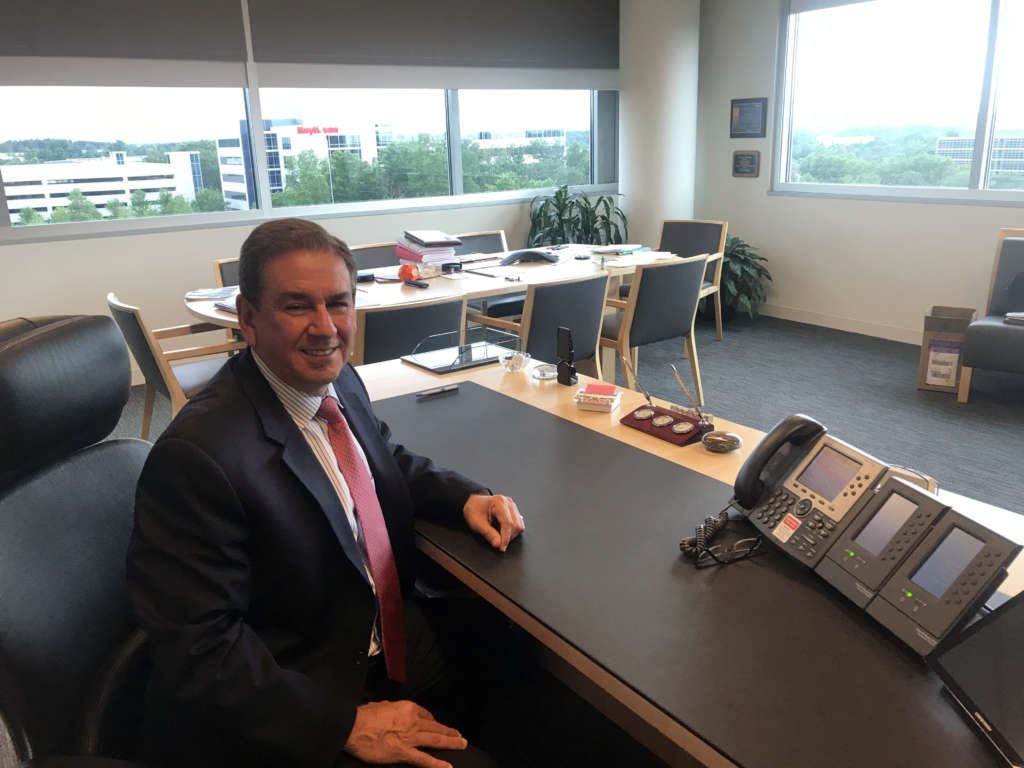
Raytheon never wavered when fighting for DOMino, a $1B cyber contract
David Wajsgras, president of Raytheon’s Intelligence, Information and Services business, said the acceptance of dev/ops is causing vendors to rethink how they...
Views from the Corner Office is a new show designed to talk to the private sector leaders that influence and impact the federal market. The goal of this monthly discussion is for federal executives, lawmakers and other industry experts to gain insights and a better understanding into the trends, the challenges and the evaluation of the technology, acquisition and leadership in the federal market by the executives who lead the federal practices of government contractors.

Best listening experience is on Chrome, Firefox or Safari. Subscribe to Views from the Corner Office’s audio interviews on Apple Podcasts or PodcastOne.
David Wajsgras, a Raytheon Company vice president and president of the Intelligence, Information and Services business, sat down with Federal News Radio’s executive editor Jason Miller at his office in Dulles, Virginia.
Here are some excerpts from that discussion.
State of the federal market
JM: Is it a good time to be a federal contractor?
DW: I would say certainly over the last decade, the pace and cadence of activity has continued to head north and today it’s a very good time to be a prime and principal, a supplier of technology to the federal government. The demands today coming out of the Defense Department and the intelligence community just from a volume standpoint are greater certainly than I’ve seen since I’ve been at Raytheon and greater much greater, exponentially greater than it was roughly speaking 20 years ago. And, I would say the demands and their appropriate for technology suppliers are continuing to increase.
JM: Let’s talk a little about those demands. Are you talking about innovation? Are you talking about what, when you say demands, I want better, faster, cheaper or what?
DW: I would say speed of delivery of new technologies and advancing capabilities is really what’s being driven by the environment that we’re in, both domestically and globally. The pace and cadence at which our customer basically needs to provide services to their end users. Whether in my case that might be warfighters, or on the civilian case, it could be the public at large.
JM: Give me an example of something the DoD, Intel or even the civilian agencies are saying they need with speed.
DW: We do a lot of work with the Air Force, which is procuring software today from a mission standpoint. So in the past we would deliver these large software on what’s called a waterfall approach. You build it, you code it over many, many years, and then after three years or five years, or in some cases 10 years, you finally deliver the program. Today, we are delivering software with a commercial model called dev/ops. And what that means is you’re basically delivering software in pieces. You have developers and operators working side-by-side delivering incremental pieces of whatever that system is ultimately going to do. It’s much more efficient both from a time and schedule standpoint, and certainly from a cost standpoint.
Cybersecurity and DOMino
JM: Can you give me a checkup of what you guys are doing with the Homeland Security Department’s DOMino cybersecurity program?
DW: DOMino is one of the largest cybersecurity contracts that’s been awarded to date. It’s actually over $1 billion. We recently completed the transition and now are in a full operational mode. What it does essentially is advance the cybersecurity stack for DHS, which is responsible for the cybersecurity across over 100 dot-gov agencies, as well as overseeing the automated information sharing platform for those agencies as well as 16 critical infrastructure verticals.
So what does that mean in English? The way to think about it is it’s a large threat intelligence library and it’s bi-directional with industry providing threat indicators into that library. The government is providing threat indicators into that library too and we are working side-by-side with DHS. Our teammates are overseeing and administering that and then pushing those threat indicators out so that the analysts know what to look for. We’re advancing and we’re improving the overall architecture and systems and tools that are used by DHS to improve the cybersecurity posture of the government.
JM: So when you’re talking about bi-directional, you’re acting as the middle person between the government and the industry sides?
DW: No. think of the system as a warehouse where this information comes in from both industry and from the government, it’s administered by DHS and it benefits industry and the government. The more we understand about the threat environment, the easier it is for analysts to protect whatever system they’re responsible for.
JM: Can you tell me from inside Raytheon what was that like for you guys as you saw the DOMino protests, when you read through the court cases? I hope that there were some late night a pizza and beer parties that you at least got at least a good laugh or cry from.
DW: I’ll tell you from my perspective, I’m talking from my full team, it was sort of the neverending movie and every time you thought the movie was about the end, you went into kind of a new chapter. I think the team did an excellent job and just putting the facts forward at the end of the day the right decision was made.
JM: Did you ever ask your team if we should just give up and walk away?
DW: Never, never. There wasn’t even a discussion about that. We felt very strongly about our position, about our proposal, about what we could deliver. Those words were never uttered and I couldn’t be moreserious from anybody on our team.
Battling insider threats
JM: How are you guarding against insider threats?
DW: We developed some products in Intelligence, Information and Services (IIS) years ago, a combination of organic research and development as well as some of these acquisitions [of companies]. We developed insider threat products, and we have deployed it within Raytheon. We have supplied those capabilities and that tool set to a number of our customers in the U.S. government.
JM: We hear a lot about the continuous evaluation as part of that guarding against people who are showing signs that they’re having trouble. Are you able to talk a little bit about this solution in terms of does it deal with continuous evaluation?
DW: Think of it as continuous monitoring of what folks are doing with their, individual computer and how they are using it and what they are using it for. When you start to use that as a tool from a business perspective or from a security perspective to monitor employees. It’s a technology that I think is very much needed because in a lot of cases the insider threat is one of the greatest threats that companies and governments face today. We have a product that does that and you can continue to add analytics to it to improve the way you’re doing this.
Childhood sweethearts
JM: What is one thing about you outside of work, outside of the federal market, that you think people may not know about?
DW: Well, some of my closest friends know this, but I met my beautiful wife when we were 12 years old. We became very good friends and started dating a few years later and as they say, the rest is history. I’ve been married 34 years.
Copyright © 2024 Federal News Network. All rights reserved. This website is not intended for users located within the European Economic Area.
Jason Miller is executive editor of Federal News Network and directs news coverage on the people, policy and programs of the federal government.
Follow @jmillerWFED





